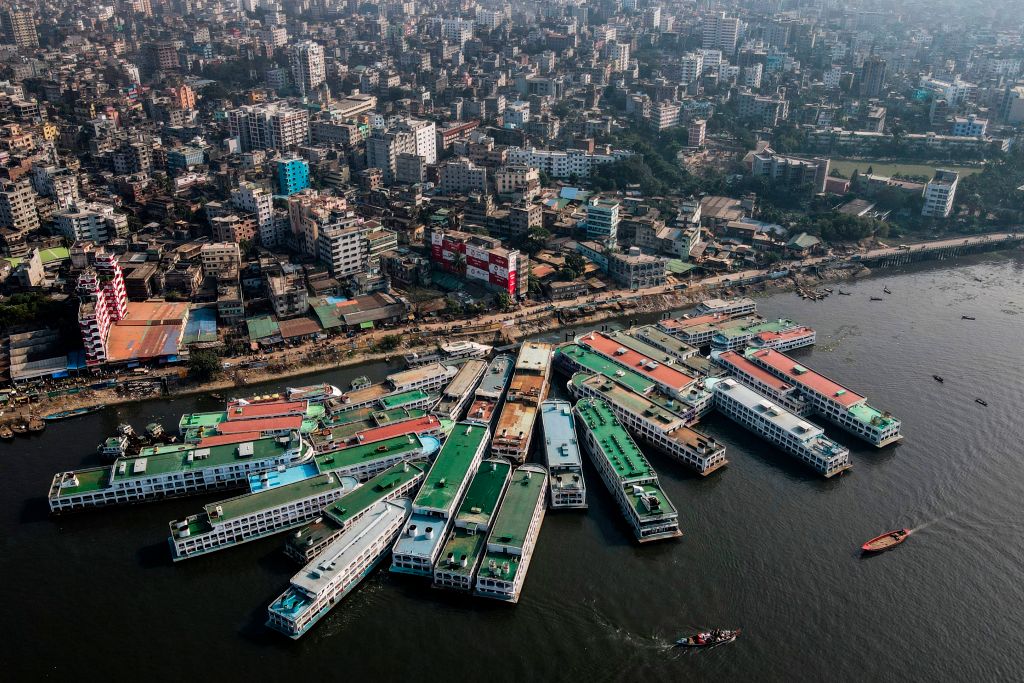
Australia’s economic opportunities in South Asia extend far beyond India. While the tariff reductions and other measures under the new economic cooperation and trade agreement will support the Australia–India economic relationship, Bangladesh is another country offering opportunities for growth.
Bangladesh is South Asia’s largest economy after India, thanks to impressive growth in recent decades and resilience to economic shock. While many economies contracted during the height of the Covid-19 pandemic, the Bangladesh’s economy rose by 5.2% in 2020, though in the past year it has felt the effects of high inflation, a fuel-price crisis that is hitting the average Bangladeshi hard and weak foreign exchange reserves. In January, the International Monetary Fund approved a support package for Bangladesh, which has generally been seen as a sensible precautionary measure to achieve economic stabilisation and structural reform.
However, despite the volatility of the past year or so, the long-term trajectory of Bangladesh’s economy is good. In line with the country’s economic growth, Bangladesh’s population, estimated at nearly 170 million, is increasingly becoming middle-class and urbanised, and the United Nations has projected that Bangladesh will graduate from its status as a ‘least developed country’ by 2026. For Australian investors, this means that there is a vibrant and emergent market to tap into.
Bolstering Australia’s economic engagement with Bangladesh will consolidate the already strong foundations of the bilateral relationship. After a violent war that led to the secession of East Pakistan from Pakistan in 1971, Australia was among the first countries to recognise the new nation of Bangladesh. Others, including the United States, were slow to recognise Bangladesh’s independence because of Pakistan’s opposition to East Pakistan’s secession.
In the 50 years since the establishment of diplomatic ties, the relationship between Australia and Bangladesh has flourished. As an impoverished country at the time of its birth, Bangladesh received, and continues to receive, aid from Australia. Australian aid to Bangladesh today is organised under the two pillars of health security and societal stability. However, Bangladesh is gradually reducing its reliance on international aid as its economic development gathers pace. Rather than being merely a passive recipient of aid, Bangladesh is now a provider of aid to other countries such as Sri Lanka, Maldives and Sudan.
After a strong period of growth in two-way trade, which increased sixfold in the 2010s, Bangladesh became Australia’s 32nd largest trading partner in 2020. As a result, there’s significant scope for the Australia–Bangladesh trade relationship to further grow. Today, the top imports from Bangladesh to Australia include apparel, textiles and footwear. Top exports from Australia to Bangladesh include vegetables, iron, steel and fertilisers.
People-to-people links between the two countries are also increasing. Census data shows that the Bangladesh-born population in Australia grew from approximately 41,000 to 51,000 between 2016 and 2021. International students form a key portion of this—more than 7,000 Bangladeshi students were enrolled in Australian courses between February and November 2022.
To further expand their economic relationship, Australia and Bangladesh signed a trade and investment framework arrangement in 2021. Even though it’s not legally binding, the agreement is expected to increase bilateral trade and investment—which is just what Australia needs to be doing in a period of strategic and economic uncertainty. The economic coercion by Beijing of recent years and the supply-chain impacts of Russia’s invasion of Ukraine have demonstrated the need for diversification. A more robust program of trade and investment with Bangladesh will help Australia diversify its markets.
But Australia’s engagement with Bangladesh shouldn’t stop at economic cooperation. Bilateral ties involve creating an environment of mutual trust and cooperation in all areas of joint regional concern. The importance of the Australia–Bangladesh relationship beyond economic engagement was demonstrated at last year’s meeting in Dhaka between Australia’s assistant foreign affairs minister and Bangladesh’s foreign minister, which served as an opportunity for the countries to talk about Australia’s engagement in the Indian Ocean region.
Climate change, transnational crime and public health are critical areas in which Australia and Bangladesh could expand their cooperation. For example, Bangladesh, where an estimated one million Rohingya refugees are still living after fleeing neighbouring Myanmar, recently called on Australia to take in more Rohingya to combat regional people smuggling.
Ultimately, enhanced engagement between Bangladesh and Australia will not only ensure mutual prosperity but has the potential to create a safer and more secure Indo-Pacific region.

